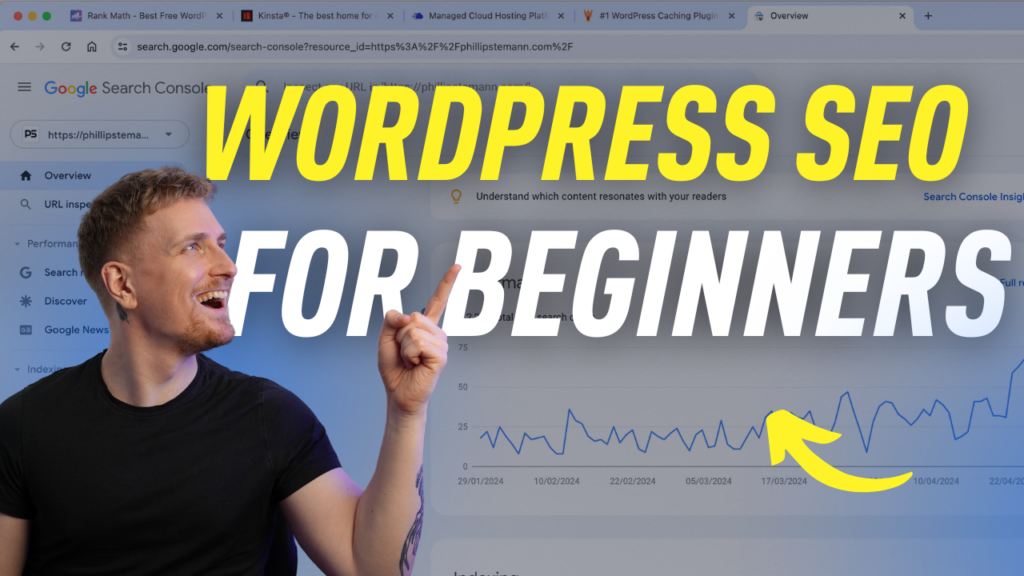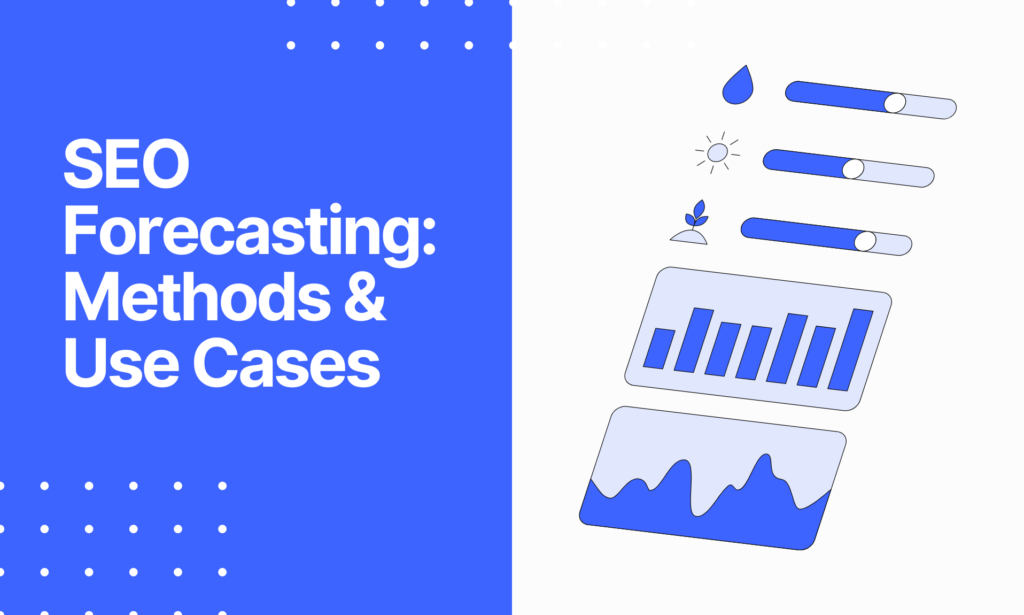Are you tired of experiencing a low click-through rate, low conversions, and a high bounce rate? When I first started my SEO(search engine optimization) journey, I just could not figure out what I was doing wrong.
One crucial aspect I later discovered was understanding and optimizing for search intent. But what exactly is search intent?
Search intent, also called user intent, is basically why people search for stuff online and what they want to get out of it. It’s all about figuring out what folks are after when they type stuff into the search bar.
This article dives into why search intent matters for SEO and gives you some solid tips on how to make it work for you.
If you are starting your SEO career, check out this article for everything you need to know.
What is Search Intent?
Search intent is commonly also known as user intent or query intent.
It refers to the reason behind a user’s search query and what they hope to learn or achieve from the search results. In simple terms, what were they looking for when they typed their question into the search bar?
Keyword research is an essential aspect of understanding search intent.
By analyzing the keywords users search for using keyword research tools, you can gain insights into their motivations and shape your content accordingly.

Understanding Keyword Intent in SEO
While “search intent” encompasses the overarching motivation behind a user’s search query, “keyword intent” drills down to a more specific level.
Keyword intent relates to the particular aim or purpose a user has in mind when typing a specific keyword or phrase into a search engine.
For instance, the keyword “chocolate” might be too broad to discern clear intent. But when a user types “how to make chocolate truffles” in the search bar, the intent becomes clearer: they’re looking for instructions or recipes.
Similarly, “buy Belgian chocolates online” signifies a transactional intent where the user is ready to purchase.
To make the most of keyword intent:
- Analyse Long-Tail Keywords: Longer, more specific keywords often give clearer indications of user intent. Tools like Semrush or Ahrefs can provide insights into these keywords.
- Study Search Engine Results Pages (SERPs): For a chosen keyword, the nature of the top-ranking content can shed light on its intent. For example, if product pages dominate the SERPs for a keyword, it likely has a transactional intent.
- Implement User Surveys: Directly asking your audience or website visitors about their intent when using specific keywords can provide direct and invaluable insights.
- Test and Adjust: As with many SEO strategies, understanding keyword intent is ongoing. Regularly review and adjust your strategy based on analytics and user feedback.
You need to remember that query intent is just one of many different aspects that you need to pay attention to for a solid digital marketing strategy.
You still need to focus your initial keyword research on building a list of keywords that will perform well in online search. This includes finding high search volume keywords with relatively low competition.
Once you have found these high search volume keywords, you can then focus on generating SEO content in certain formats based on the types of keywords and search intent.
For more information on SEO writing, check out this article.

Why Is Search Intent Important For SEO?
Understanding user intent is fundamental to achieving better SEO results and reaching your business goals. Here’s why:
1. Tailoring Content to User Expectations:
By discerning search intent, you can tailor your content to meet users’ needs.
This satisfies user expectations and enhances user engagement and retention on your site. Both of these can be major ranking factors.
2. Relevance in Search Engine Results:
At their core, search engines aim to provide users with the most relevant and valuable content.
If your content matches the search intent queries, search engines will view it as more pertinent and likely rank it higher in search results.
3. Attracting Organic Traffic:
By optimizing for search intent, you’re more likely to draw in organic traffic to your relevant content.
Your content will resonate better with users if it aligns with their search.
4. Boosting Your Website’s Authority:
When users find your content relevant and valuable, it not only drives engagement and increases conversion rates but also enhances your website’s authority and reputation in the eyes of search engines.
5. Avoiding Missed Opportunities:
Neglecting search intent can lead to lower rankings and decreased traffic.
In the competitive digital landscape, ensuring your content aligns with search intent is pivotal to maximizing your reach and potential.

4 Types of Search Intent
In the world of SEO, understanding the different types of intent helps to create content that meets the needs of your target audience.
There are 4 main types of search intent that users have when searching: navigational, informational, transactional, and commercial intent.
The category of search intent can greatly affect the formatting of your content. Determining, for example, if you need to create blog content, visual content, or something else entirely.
Navigational Search Intent
If a user has navigational intent, their primary goal is to find a specific website or page.
For example, if someone types the navigational query “Facebook login” into the search bar, they are looking for the login page for Facebook.
Websites with strong brand recognition often benefit from optimizing for navigational search intent target keywords. It is important that you consider navigational intent when setting up your business or choosing your business domain.
Informational Search Intent
Informational intent is when a user seeks information on a particular topic or question. For example, if someone types the informational query “how to bake a cake,” they are looking for informational content on how to bake a cake.
The goal of content targeting informational keywords is to provide valuable information that thoroughly answers the user’s query.
In my experience, informational intent searches will usually result in blog posts or longer articles.
Transactional Search Intent
Transactional intent is when a user wants to make a purchase or engage in another transaction.
For example, if someone types in “buy a new phone,” they want to make a purchase.
Websites that sell products or services directly benefit from transactional intent searches and influence a visitor’s purchase decision.
Commercial Intent
Commercial intent, also called commercial investigation intent, is when a user researches a product or service and intends to purchase it.
For example, if someone types in “best coffee makers,” they are researching coffee makers before purchasing.
Content created for commercial intent searches should help potential customers conduct a commercial investigation, which will allow them to decide about a product or service.
These comparison pieces often have external links to the products, which encourages the user’s buying journey and allows you to earn a commission.
Transactional Intent vs. Commercial Intent
While both transactional and commercial intents are types of search intent queries that revolve around purchases, they serve distinct stages in the buyer’s journey:
- Transactional Intent:
This is when a user has already decided to purchase or is on the cusp of making a purchase.
Their searches are often direct and include transactional keywords, such as “buy iPhone 1” or “order Nike running shoes online.”
For content creators, landing pages focussed on transactional intent optimization should have a clear call-to-action, easy navigation to purchase options, and minimal distractions.
- Commercial Intent:
Users with commercial intent queries are in the research phase. They might be considering a purchase in the future, but their primary goal is research. They are currently looking for reviews, comparisons, or more information.
Commercial intent queries might include “iPhone vs. Samsung review” or “Best running shoes 2024.”
Content geared towards commercial searches should be informative, detailed, and unbiased, helping users decide later.
Understanding these subtle differences can greatly improve how you target and satisfy potential customers in their journey.
By meeting the search intent of your users, you increase the chances of ranking higher in search results and driving organic traffic to your website.

How To Determine Search Intent Using Tools and Strategies
We now know that search intent is key for content optimization. However, determining search intent can be challenging, especially if you’re unsure which tools and strategies to use.
This section will discuss various techniques that will help you determine search intent effectively.
Analyze Search Terms
The first step in determining search intent is to assess users’ search terms.
By examining these terms, you can identify patterns, phrases, and keywords that indicate what users want when searching.
You can use tools like Google Trends, Google Search Console, or Keyword Planner to get insights into what users are searching for.
Check out this article on how to use Google Search Console for SEO.
Use Search Intent Analysis Tools
Another effective way to determine search intent is to use search intent analysis tools.
These tools use machine learning algorithms to analyze billions of search queries and provide insights into what users want when they search.
Examples of these tools include Semrush, Ahrefs, and Moz.
A cheaper option is LowFruits, which you can use for free to find search intent on thousands of keywords. You can even use Google Analytics.
Look at the Search Results
Examining the search results can also help you determine search intent.
By looking at the top-ranking pages for a particular search query, you can gain insights into the type of content that satisfies user intent.
Check out this article on how to see a website’s keywords to help you get the most from this process.
You can also analyze the type of content that appears in the search results, such as videos, images, or blog posts, to understand what users prefer when performing a search.
Using these tools and strategies, you can effectively determine search intent and tailor or prune your content to satisfy user expectations.
Remember that search intent can change with time, so it’s essential to monitor and analyze search queries regularly to stay current.

Incorporating Search Intent into Your SEO Strategy
Now that you understand the importance of search intent in SEO, it’s time to incorporate it into your overall strategy. Here are some practical tips:
1. Determine the Search Intent of Your Target Audience
The first step in incorporating search intent into your SEO strategy is to determine the search intent of your target audience.
Use tools and strategies such as analyzing search terms and utilizing search intent analysis tools to gain valuable insights into user behavior and intent.
This will help you tailor your content to meet and satisfy their needs.
2. Optimize Your Content for Search Intent
Once you have determined the user search intent, the next step is to optimize your content to align with it.
Start by creating content that meets the user’s expectations when they search for a particular query.
Create a buyer persona that represents your most common type of visitor or buyer, and figure out what they would expect to see. Do you need to alter your business domain? What are the common search intents behind this representation of your loyal customers?
The next step is considering which content type, or content format, is the best option for you. Incorporate relevant keywords that align with search intent into your content.
These can include navigational keywords such as your company name, informational keywords like common questions, transactional keywords like product names, and commercial keywords like ”best” or ”cheapest.”
You might find that you need to optimize for more than one type of keyword at the same time.
Check out this article on how many keywords a single page should target for more detail.
For example, your company may need to consider both navigational keywords and commercial keywords for an article comparing two of your products.
This will improve the relevance of your content to users and search engines.
3. Improve Your On-Page SEO
On-page SEO is essential to incorporating search intent into your overall strategy for content creation.
Use descriptive page titles and meta descriptions that accurately represent the content.
Incorporate header tags (H1, H2, H3, etc.) and specifically SEO headlines to help search engines understand the structure and hierarchy of your content.
Use alt tags for images to improve accessibility and provide context for search engines.
All of this will help you improve your search engine rankings.
I highly recommend using Google Keyword Planner or a similar tool to help you plan a piece of content with a solid keyword strategy.
Check out my on-page SEO checklist to find everything you need.
4. Enhance User Experience
Along with on-page SEO, user experience is equally important.
Ensure your website is easy to navigate, mobile-friendly, loads quickly, and provides a positive user experience.
Ensure that your content is readable and scannable. Ensure content is structured in a way that is easy to read and understand, with short paragraphs, bullet points, and informative headings.
It is also important that your website encourages continued navigation and interaction with your content. As a content creator, you should not only have high-quality content but should also focus on link-building using internal links.
These internal links should be placed in such a way that your users can find other pieces of content. A common strategy is to list posts at the bottom of your page to encourage your user’s journey through your website.
Doing so will satisfy user intent and keep users engaged with your content. You can use data from analytics tools like Google Analytics to figure out if there are any issues in the user journey that you need to address.
Check out this article on on-page SEO for E-commerce!

Optimizing for search intent requires a balance between on-page SEO and user experience.
Remember, keep the user in mind when optimizing your content and developing your marketing strategy. Focus on creating content that satisfies the user’s search intent and provides them with a positive user experience on your website.
Understanding and effectively leveraging search intent is a cornerstone of successful SEO.
Your business can attain higher search rankings and drive meaningful traffic by focusing on audience intent, using relevant tools, and continually refining content strategies.
FAQ
What are the 3C’s of search intent?
The 3C’ss of search intent are Content, Context, and User Behavior.
Content refers to the relevance and quality of the information provided. Context involves understanding the circumstances surrounding the search or the intent type. User Behavior focuses on analyzing how users engage with search results.
What tools exist to map a search query to the user’s intent?
Several tools can help map a search query to user intent. Some popular analytics tools include Google Keyword Planner, Google Trends, Google Analytics, and Google Search Console. Additionally, third-party tools like Semrush, Ahrefs, and Moz offer insights into search queries and user behavior, helping to understand and optimize search intent.
What is the difference between keyword search volume and search intent?
Keyword search volume indicates how often a keyword is searched, while search intent reveals why users conduct those searches.
How does Google identify the search query intent, and what is the list of classifications?
Google identifies intent based on search terms, context, and user behavior. Classifications include navigational, informational, transactional, and commercial search intent.
What are the four search intents?
The four main search intents are navigational, informational, transactional, and commercial investigation.
Navigational intent seeks specific websites, informational intent seeks knowledge, transactional intent aims to make a purchase, and commercial investigation intent involves researching products or services for future purchases.


